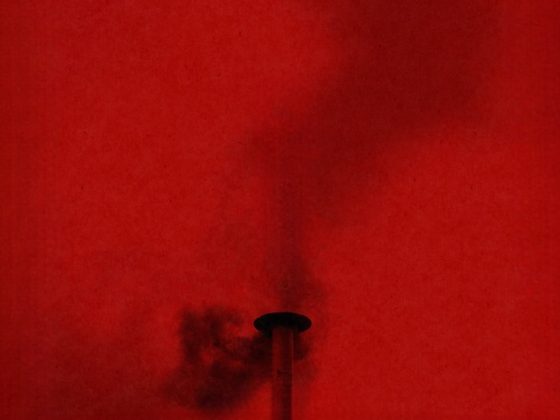In Namibia, an African venue that is being set up as the scene of the world’s next—and possibly last—major onshore oil discovery, the oil and gas rights to an entire 8.5-million-acre sedimentary basin are owned by a single, small company. Mentioned in today’s commentary includes: Occidental Petroleum Corporation (NYSE: OXY), Kinder Morgan, Inc. (NYSE: KMI), Equinor ASA (NYSE: EQNR), Apache Corporation (NASDAQ: APA), Crescent Point Energy Corp. (NYSE: CPG).
Now, Wood Mackenzie, the most trusted name in oil and gas resource assessments, has issued a report stating that this same basin is analogous to three world-class basins, including the $540-billion Midland Basin in Texas.
One of the most respected petroleum geochemists in the world, Dan Jarvie, came out of retirement for this play and believes this could be one of the largest oil basins worldwide, and his conservative estimate is that it could hold over 100 billion barrels of oil.
Just 40 days from now, the first well should be complete …And just a few weeks after that, the analytical results should start coming in. A discovery barely moves the needle on an integrated supermajor that’s typically involved in drilling a basin of this scope and scale.
But for a junior, even the start of a drill can have maximum impact on share prices… And the junior company stealing the show is Reconnaissance Energy Africa (RECO.V, RECAF).
#1 This ‘African Permian’ Play Is Considered Analogous to the Midland Basin
Massively underexplored Africa is most likely the only place in the world left where we can possibly anticipate a major onshore oil and gas discovery. If that ends up being Namibia–all the more exciting. This under-explored country has never produced a single barrel of oil in its history. Either onshore or offshore and has excellent fiscal terms and infrastructure.
Exxon (XOM) has already scooped up an additional 7 million net acres offshore …But onshore, it’s all about Recon Africa, which strategically swooped in to acquire the rights to the entire Kavango sedimentary basin from Namibia all the way to Botswana. That’s a basin over 8.5 million acres, almost the size of Switzerland.
When Kavango first came to the world’s attention a few years ago, another world-renowned geologist and geophysicist, Bill Cathey, who works with the oil and gas supermajors, studied the basin and said: “Nowhere in the world is there a sedimentary basin this deep that does not produce commercial hydrocarbons.”
Then, Jarvie, a key force behind the Barnett Gas play and former chief geochemist for EOG Resources, jumped in on RECO as a shareholder because he saw a “very strong, independent junior explorer… sitting on a sedimentary basin that rivals South Texas in a massively underexplored region”. Jarvie’s own estimates 100+billion barrels of oil equivalent are based only on 12% of Recon Africa’s (RECO.V, RECAF) total holdings.
#2 Analyst Coverage Is Decidedly Bullish—It Just Nearly Doubled
Haywood is all over this one. In early November, Haywood initiated coverage with a short-term $2.50 price on RECO because the company is “set and funded to de-risk a potentially material resource play onshore Namibia and Botswana with 1,348 mmbbls/58.1 Tcf, a conservative estimated prospective recoverable resource (gross).”
In arriving at its 12-month target price of $2.50/share, Haywood has risked this upside potential by a 6% chance of commercialization. In other words, they’re playing it uber-cautious with the $2.50 price tag. But in December Haywood raised its short term price target to $4.00 per share.
More to the point, Haywood recommended “accumulating a position ahead of drilling/evaluation news flow in H1/21 aimed at proving up the presence of a working hydrocarbons system, which if confirmed, should provide abundant opportunities for further exploration and appraisal drilling”.
Haywood is also hanging on Dan Jarvie’s expertise here, with good reason. So, given the scale of the basin–again, we’re talking about 8.5 million acres–a discovery would present manifold opportunities for strategic joint ventures for further de-risking–without share equity dilution. And now, that story just got even better ….
#3 Drilling Just Started ….
With the drill bit just hitting the ground on this massive African Permian play, If Dan Jarvie Is Right, RECO could end up going from a small-cap to a multi-billion-dollar company.
Torridon Investments has also initiated coverage, calling Recon Africa (RECO.V, RECAF) a “corporate story with a dedicated and internationally first-class management and technical team”.
The catalysts are all there, with the drill bit already hitting the ground in a 6-2 well spud. By the second half of this year, it’s likely RECO will already be in JV discussions if drilling goes as planned.
#4 This is the grand oil lottery
This is the oil lottery, but Recon Africa (RECO.V, RECAF) is not your average wildcatter. This is something entirely different. This is one of those oil opportunities that almost never comes around. This is a “high-conviction play”, according to Torrindo’s coverage, with a basin that is “one of the most significant underdeveloped basins of such depth globally”.
Recon Africa has put together a veritable “who’s who” exploration and technical team to move this project forward with some of the most qualified and successful oil “finders” in the business.
- Jay Park, RECO COB and director, is a veteran energy lawyer with tons of Africa experience and was designated Queen’s Counsel in Canada in 2011. He’s advised oil companies and governments in 50 countries, and he has a following of the best of the best.
- Scot Evans CEO, Geologist, new fields expert, is an energy industry leader with a combined 35 years of experience with Exxon, Landmark Graphics and Halliburton.
- Daniel Jarvie is globally recognized as a leading analytical and interpretive organic geochemist of Barnett Gas fame, and “Hart Energy’s Most Influential People for the Petroleum Industry in the Next Decade.”
- Nick Steinberger, a world-class drilling completion expert and manager of the drilling company; yes Recon Africa owns its own rig that if picked up for a song in the downturn
- Bill Cathey is a geophysicist to the supermajors, including Chevron, ExxonMobil, ConocoPhillips … major and large
This is the best of the best–all of them confident in the chance of discovering the largest oil play in the last 20 to 30 years.
Oil Majors Are Making Moves In The Market, As Well
Norwegian oil and gas giant Equinor ASA (EQNR) is one of a handful of oil companies that managed to turn a profit in the tumultuous market after its oil storage bet paid off big time. Equinor reported a surprise adjusted net income of $646M for the second quarter, trouncing Wall Street’s expectations for a loss of $250M thanks to huge trading profits despite a huge 53 percent plunge in revenue to $8.04B.
Equinor has has taken a technology-driven approach to the oil price crash in a way that few other companies have been able to. It’s even brought the “remote” work idea to its oil rigs. Equinor’s Valemon, situated 160km from land, contains about 192 million barrels of oil equivalent. Its remote employees are expected to spend two weeks a year on the vessel to familiarize themselves with the space, alleviating some of these safety concerns.
While Equinor’s share price was hit hard in March 2020, it is already trading near its January 2020 prices thanks to its innovative approach to the crisis. And as the green push accelerates, Equinor may emerge as one of the most balanced energy companies in the business, making it particularly appealing as many other oil companies fall out of favor with investors.
Occidental Petroleum (OXY) had a particularly turbulent 2020. Like all other oil firms everywhere in the world, Occidental struggled with the weak oil and gas prices, which impact the value of its proved and unproved oil and gas reserves.
The crisis even lead to the collapse of a key deal in which Total was to buy Occidental’s assets in Ghana. The collapsed deal was another blow to Occidental, which was relying on the sale of Anadarko’s African assets to receive a total of US$8.8 billion that could partially reduce the huge debt it had accumulated to buy Anadarko in what analysts now see as an ill-timed decision to pursue such a huge and leveraged transaction.
With the troubles of 2020 in its rear-view mirror, the company is looking to capitalize on the inevitable rebound in oil. And it’s already beginning to materialize. Since November, Occidental stock has already risen by 100%, and this rally could kick into high gear in the coming months.
Major North American pipeline operator Kinder Morgan (KMI) has been particularly upbeat in recent months. In fact, in early December, it issued optimistic updates ,planning higher dividends and expecting more profits in 2021, after the challenges the oil industry has faced this year.
Kinder Morgan also expects to raise its dividend for 2021 by 3 percent compared to this year. The company expects the board to declare a Q4 dividend of US$0.2625 per share or US$1.05 annualized. The board expects the 2021 dividend to be US$1.08 per share annualized, or a 3-percent increase from the 2020 dividend.
It was an interesting 2020 for Apache Energy (APA) investors, to say the least. Late in 2019, it fired its iconic VP of worldwide exploration, Steven Keenan after disappointing exploration results offshore Suriname, which was supposed to turn into another wild ride like Exxon’s series of discoveries just across the maritime border in Guyana.
Despite the downturn, Apache still managed to beat other key players in the shale patch—but all eyes are now on Suriname, exactly where they should be. This is history in the making, and the upside is looking good.
Crescent Point Energy Corp. (CPG) was another Canadian oil producer that struggled in the oil price crisis of last year. The mid-cap company saw its share price tumble from a January high of $4.56 to an all-time low of just $0.70 as oil demand dissipated and prices tumbled into the negatives in a historically bad first-quarter. The terrible year forced the company to lower output and capex forecasts for 2021.
Despite its struggles, however, Crescent has seen its share price climb significantly over the past month. In fact, it has even received a ‘strong buy’ signal from analysts at Zack’s thanks to its strong price performance and improving technical.
Matt Murphy, an analyst with energy research firm Tudor Pickering Holt explained, “There will be a bit of incremental growth in excess of this record,” adding, “Our model shows the oil sands getting to 3.3 million bpd by the middle of 2021.”
By. Cliff Shrew
SOURCE Oilprice.com










